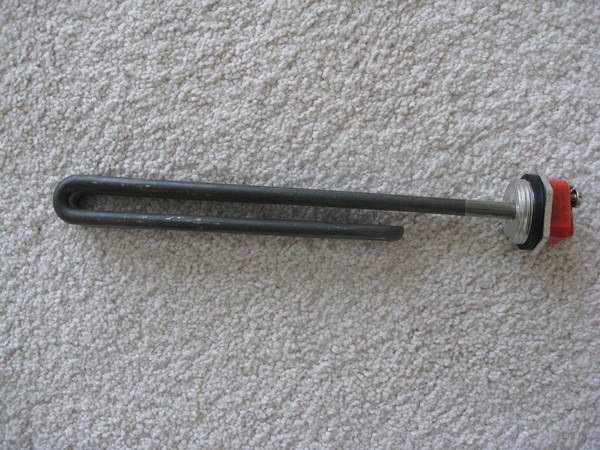Well a while back I ordered a Tri Clover RIMS Tube fro Derrin at Brewer's Hardware. I contacted PJ, and he was kind enough to draw up a schematic for a simple controller to run my pump and RIMS Tube. I am finally getting around to starting the project. The schematic was for a 20 amp 120v RIMS tube that would not allow the element to be powered if the pump was not on.
Here is the drawing PJ did:

I went ahead and ordered 2 of the elements he had recommended (one as a backup). It was a Rheem SP10868GL 120V 2000W Stainless Steel Element

Well I got the elements, and there is no way I can get them to fit in the tube without touching the sides. My question is has anyone else used these in Derrins RIM Tube? What are others who have the Tri clover using?
Any help would be appreciated.
Joe
Here is the drawing PJ did:

I went ahead and ordered 2 of the elements he had recommended (one as a backup). It was a Rheem SP10868GL 120V 2000W Stainless Steel Element

Well I got the elements, and there is no way I can get them to fit in the tube without touching the sides. My question is has anyone else used these in Derrins RIM Tube? What are others who have the Tri clover using?
Any help would be appreciated.
Joe


 but has anyone had a burned flavor. Is it best to start the element after you have recirculated for a few minutes to get the smaller particles that may have gone threw the false bottom back on top of the grain bed?
but has anyone had a burned flavor. Is it best to start the element after you have recirculated for a few minutes to get the smaller particles that may have gone threw the false bottom back on top of the grain bed?


